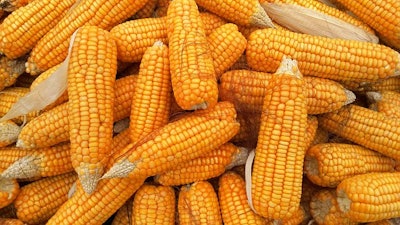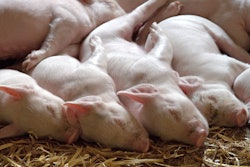
Reuters’ Poll of Trade Estimates Ahead of USDA’s Monthly Reports
Average U.S. corn yield expectations came in at 167.5 bushels per acre.
Harvested area expectations are down 360,000 acres from USDA October.
The trade looks for 136 million bushels to be cut from USDA’s production.
Corn ending stocks expectations averaged at 1,817 million bushels.
Average soybean yield expectations are at 46.6 bushels per acre with harvested area at 75.4 million acres.
USDA October was at 46.9 bushels with harvested area at 75.6 million.
The trade is expecting about 40 million bushels to be trimmed from USDA’s October production forecast.
Soy ending stocks are expected to come in near 428 million bushels.
The trade looks for wheat ending stocks to come in around 1,035 million.
FBN’s Take On What It Means: The trade on average looks for USDA to cut production and/or stocks for corn, soybeans, and wheat in its upcoming reports. A surprise to the market would be if USDA added to its production and stocks totals although FBN is carrying a larger soybean yield than USDA October and the average trade estimate while FBN’s corn yield is near average trade expectations.
Rains in Forecast for Brazil, Planting Pace Ahead of Average
Mato Grasso is forecast to receive several inches in the 15-day outlook.
Parana also is forecast to accumulate a few inches.
If realized, the rains would ease dryness concerns for the major soybean-producing states.
The current total in the forecast would be precipitation levels to near-normal for Mato Grasso for mid-November.
Brazil’s soybean planting progress is running behind last year’s fast pace but is slightly ahead of the average.
About half the crop is planted, 46 percent, near the 43-percent average.
Mato Grasso was 84 percent planted while Parana was 60 percent.
FBN’s Take On What It Means: The moisture, if realized, would lessen concerns about Brazil’s dryness over the previous weeks. This potential shift in the weather pattern is normal for Brazil during the early growing season. Brazil is poised to have another solid soybean crop if weather is near normal, given acreage expectations around 90 million acres, which will continue to compete with U.S. soybeans. Soybean planting pace can impact second season corn, especially as soybean planting is pushed later into the season. No major concerns are yet present.
The risk of trading futures, hedging, and speculating can be substantial. FBN BR LLC (NFA ID: 0508695)















